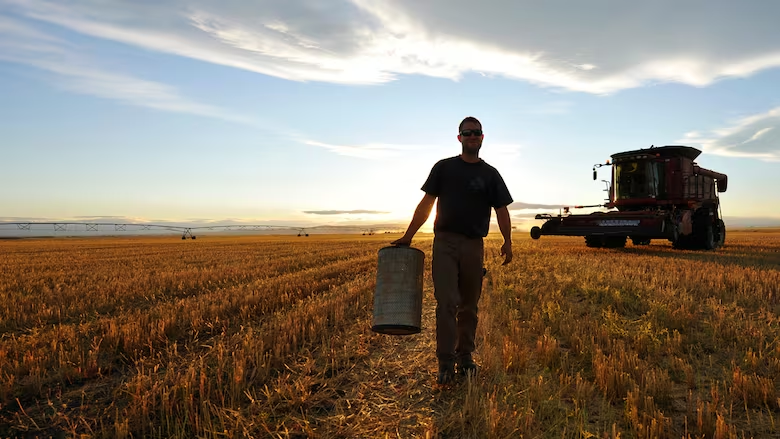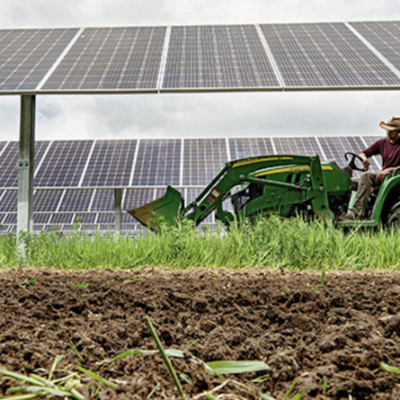How climate change is affecting American farmers is one of the most important stories in agriculture today. As 2025 unfolds farmers across the United States are facing new and unpredictable challenges brought on by a changing climate. From rising temperatures to extreme storms farming has never been more difficult or more important.
In this article we break down the real impacts of climate change on American farmers using simple easy-to-understand language.
Rising Temperatures Are Shifting Growing Seasons
One of the clearest examples of how climate change is affecting American farmers is the shift in growing seasons. Warmer temperatures mean crops are planted earlier but they also face new threats:
- Heat Stress: Crops like corn and wheat are sensitive to high temperatures especially during pollination.
- Droughts: Longer and hotter summers lead to more severe droughts reducing yields.
- Pests and Diseases: Warmer climates allow insects and plant diseases to thrive in areas they previously could not.
Farmers must now choose between planting earlier to avoid summer heat or risking crops not maturing properly. It is a gamble every year.
Extreme Weather Is Devastating Crops and Livestock
Farmers have always dealt with weather but climate change is making it far more extreme. Here are some ways:
- Flooding: Stronger storms bring heavy rains flooding fields and washing away soil nutrients.
- Drought: Water shortages especially in the Midwest and Southwest threaten both crops and cattle.
- Wildfires: In the West wildfires are destroying grazing lands and agricultural equipment.
- Hurricanes: Farmers along the Gulf Coast face bigger and more damaging storms.
Each event can wipe out an entire season’s work leaving farmers financially devastated.
Water Is Becoming a Scarce Resource
Another major way how climate change is affecting American farmers is through water scarcity. Farming depends heavily on irrigation but in many places water is disappearing:
- The Colorado River which supplies water to several states is at historically low levels.
- Aquifers that farmers rely on for irrigation are being drained faster than they can recharge.
- Water rights battles between states cities and farms are becoming more common.
Without reliable water farmers have to either switch crops reduce planting or invest in expensive irrigation technologies.
Soil Health Is Suffering

Healthy soil is essential for good crops but climate change is hurting it badly:
- Erosion: Heavy rains and floods strip away topsoil the most fertile layer.
- Decreased Organic Matter: Hot dry conditions kill the microorganisms that help keep soil healthy.
- Nutrient Loss: Intense farming combined with climate change drains soils of vital nutrients.
To fight back farmers are turning to practices like no-till farming cover crops and crop rotation but these methods take time and money to implement.
Financial Pressures Are Increasing
Farming has always been financially risky but today it is even harder. Some reasons include:
- Higher Insurance Costs: More extreme weather means higher premiums for crop insurance.
- Reduced Yields: Lower crop production means lower income.
- Higher Input Costs: Costs for water fertilizer and pesticides are rising fast.
- Debt: Many farmers are taking on more debt to stay afloat.
Small family farms in particular are struggling with many having to sell land or close down completely.
Mental Health Struggles Are Growing
An often-overlooked effect of how climate change is affecting American farmers is the toll on mental health. Imagine working all year only to lose everything to a storm or drought. It is happening more often and it is leading to:
- Higher Stress Levels
- Increased Depression
- A Rise in Farmer Suicides
Some organizations are stepping in to offer mental health support but more needs to be done.
What Are Farmers Doing to Adapt?
Despite all these challenges American farmers are some of the most resourceful people around. Here are some ways they are adapting:
- Diversifying Crops: Growing a wider range of crops spreads the risk.
- Investing in Technology: Using drones weather apps and precision farming techniques to monitor crops and conserve resources.
- Switching to Climate-Resilient Crops: Crops like sorghum and chickpeas are more drought-resistant than traditional staples like corn.
- Regenerative Agriculture: Focusing on farming methods that rebuild soil health and capture carbon from the air.
These strategies offer hope but adapting costs money and not every farmer can afford it.
How the Government Is Responding
Federal and state governments recognize how climate change is affecting American farmers and are taking action:
- Financial Assistance: Programs like disaster relief loans crop insurance and subsidies are helping farmers recover.
- Research Funding: New studies are being funded to develop climate-resilient crops and better farming methods.
- Infrastructure Investments: Efforts to improve irrigation systems roads and storage facilities are underway.
- Policy Changes: Some states are offering incentives for farmers who adopt climate-friendly practices.
Still many farmers feel that the government is moving too slowly given the scale of the crisis.
What the Future Holds for American Farming

Looking ahead the future of American farming will depend on how well farmers can adapt to a rapidly changing climate. Some key trends we might see include:
- Smaller Farms Joining Cooperatives: To share costs and resources.
- More Urban Farming: Growing food closer to where people live to reduce transportation emissions.
- Technological Breakthroughs: Innovations like vertical farming and lab-grown meat could change agriculture.
- Greater Focus on Sustainability: Consumers are demanding more environmentally friendly food options and farmers will respond.
There will be challenges no doubt but there will also be opportunities for those willing to embrace change.
Final Thoughts on How Climate Change Is Affecting American Farmers
How climate change is affecting American farmers is one of the biggest stories shaping America’s future. Rising temperatures extreme weather water scarcity and financial pressures are making farming harder than ever. Yet American farmers are tough innovative and determined to adapt.
Supporting farmers through smart policies financial help and consumer choices will be key to securing the future of food in America. If we work together we can help farmers not just survive but thrive in the face of climate change.
also read – How the U.S. Is Preparing for the 2026 World Cup: Plans & Progress






